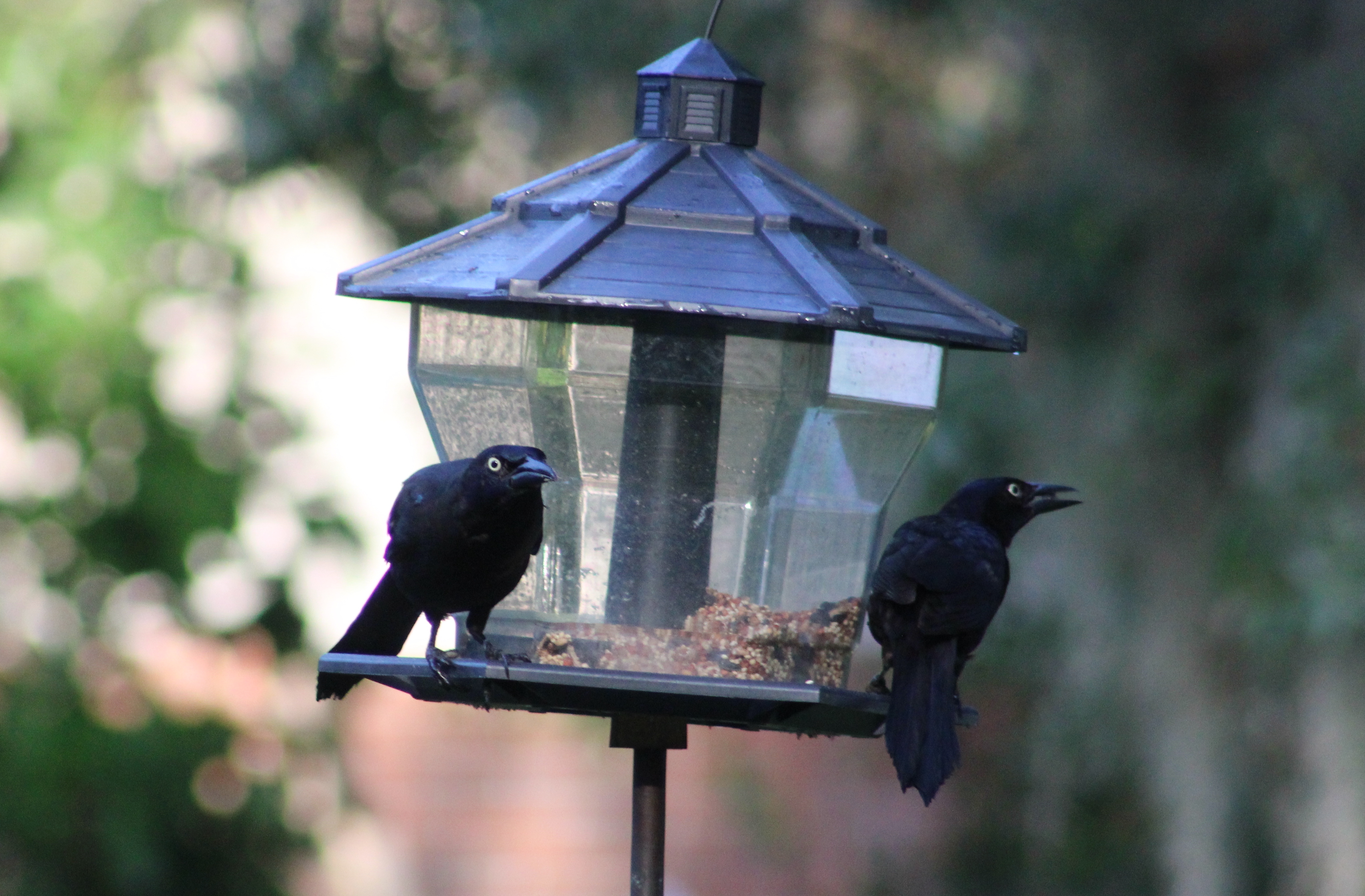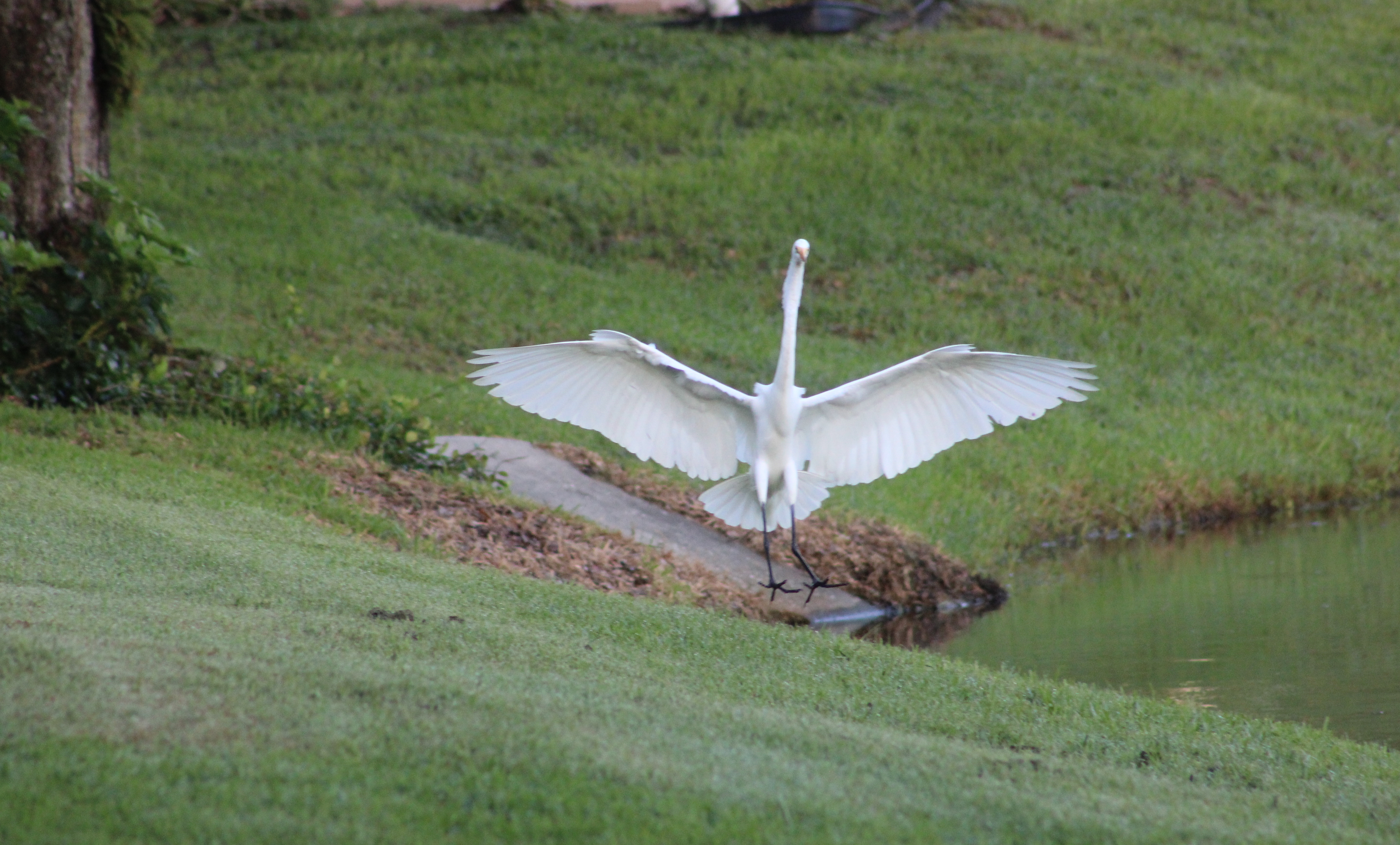- July 8, 2025
-
-
Loading

Loading

It's very still in the Braden Woods backyard of Susan and John Darovec on a hot July day.
If you wait patiently, though, and sit quietly, it isn't long before the show begins.
The star is nature itself as this is a Certified Backyard Wildlife Habitat that has been recognized by the National Wildlife Federation. After a short wait, squirrels begin to race around the yard, a male cardinal perches on a bird feeder, and a red-bellied woodpecker goes tree-to-tree looking for food. An armadillo scurries past and common grackles, a blue jay and two black-bellied whistling ducks make brief appearances.
The Darovecs have added a bird feeder and some birdbaths to their yard, and a woodpile that provides shelter for the animals that have made this particular yard their home.
Those who apply for their yard to be a Certified Backyard Wildlife Habitat have to show they have provided food, water, cover, and places to raise young for the wildlife that uses the land. The yard must be made of at least 50 to 70% native plants that provide multi-season bloom. The yard must be free of neonicotinoids (insecticides).

You can apply for the designation at NWF.org/Certify. The National Wildlife Federation notes "Rapid and large-scale changes to our lands and waters mean wildlife is losing the habitats it once knew. Every habitat garden is a step toward replenishing resources for wildlife such as bees, butterflies, birds, and amphibians — both locally and along migratory corridors."
Seated in her living room, Susan Darovec was talking about her yard when a flit of movement caught her attention. She pointed out a red-bellied woodpecker that had made its way into the yard, and then had exited just as quickly. The woodpecker had landed on one of the yard's "snags."
A snag is a standing dead or dying tree, often topped, cutting away all its higher-up branches above the cut. It is usually cut at a height so when it does fall, it won't cause any damage to a home, pool or other yard structure.
Most people don't leave a snag standing when a tree dies, because, well, some think they are ugly. They are, after all, dead.
However, snags have lifesaving powers for various kinds of wildlife, such as woodpeckers.

The National Wildlife Federation notes that "Dead trees provide vital habitat for more than 1,000 species of wildlife nationwide. They also count as cover and places for wildlife to raise young in the requirements for Certified Wildlife Habitat designation."
And then there is the show.
"It is such a delight that you can see all the animals (that are attracted to snags)," Susan Darovec said.
The Darovecs have four snags in their yard, two in the front of the house and two in the back. Three of the snags are pine and the other is an oak.
The pines were hit by lightning and the oak never took off after a replanting.

"The (pine) snag in our front yard has fed many red-bellied and pileated woodpeckers and housed multiple woodpecker families," Susan Darovec said. "One pine snag in the back yard seems to be an excellent food source for many woodpeckers. Our small oak snag in the front yard has provided homes for downy and red-bellied woodpeckers. It also, apparently, is the perfect perch for mockingbirds and brown thrashers when they are checking out our yard for dangers to their nests."
The Darovecs would dispute that snags are ugly.
"None of these snags in an eyesore," she said. "In fact, as the bark drops, the trees expose beautiful natural designs."
They both understand that not everyone likes the look. Perhaps, though, people would be interested to hear about the cost savings if they decided to cut the dead tree into a snag.
Susan Darovec talked about one of her good friends in Braden Woods who just had a large pine tree die after it was hit by lightning. She couldn't convince her friend to leave the snag in place, and the cost to cut the tree down and remove the stump was $2,500. It would have been about half that much to cut the tree off as high as necessary to keep it from causing any damage when it falls, John Darovec noted that when the snags fall, they are so deteriorated they are easy to get rid of, along with the stump.

"No big machines are needed," John Darovec said.
While snags make a lot of sense in Braden Woods, which features so many homes tucked into a forest-like setting, snags might not blend in so well in newer communities void of many trees. The snags blend into their setting at the Darovecs' home.
The Darovecs have spent a lifetime caring about wildlife.
Susan Darovec, who was an educator for 37 years, grew up a bird watcher in Kalamazoo, Michigan.
"We would watch the cardinals and blue jays," she said. "And one of my favorites was the grosbeaks. They were so colorful. We were feeding them, helping them to exist. We also would see cuckoos. That was a treat. We had bird feeders and bird baths to support the wildlife. Snags were something I grew up with. They last about five years (after they die and are cut)."
They moved to Florida in the late 1980s and have been in their current home for 21 years.
When it comes to trees dying in his yard, John Darovec said the best course is to do nothing.

"Just let it go and we will see what happens," he said.
He was told that some people don't like the look of snags.
"People think that real short grass looks good, too," he said. "You shouldn't cut your grass short in the middle of the dry season. It's about living with nature."
Both John and Susan Darovec are members of the Manatee Audubon Society.
When they first started living at their property, they had a tree die and they thought about taking it out.
"It broke our hearts to lose a tree," Susan Darovec said. "But that's nature."